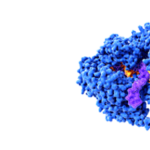Introduction
In the evolving landscape of biosafety research, the National Institutes of Health (NIH) has taken proactive steps to address the unique challenges posed by gene drive modified organisms (GDMOs). Recently, the NIH revised its guidelines to provide specific biosafety practices for research involving GDMOs in contained settings.
The revisions, informed by a Request for Information (RFI) published in August 2023 and recommendations from the Novel and Exceptional Technology and Research Advisory Committee (NExTRAC) report titled “Gene Drives in Biomedical Research,” are aimed at strengthening existing biosafety policies and guidance. Here’s a breakdown of the key updates:
Minimum Containment Requirements
The revised guidelines now specify the minimum containment requirement for research involving GDMOs. The guidelines ensure that research activities are conducted with the utmost caution and that containment measures are appropriately tailored to the level of risk involved.
Risk Assessment Considerations
Conducting risk assessments for research involving GDMOs presents unique challenges due to the inheritable nature of gene drives and their potential long-lasting impacts on ecosystems. The guidelines outline considerations for risk assessment, including factors such as the type of genetic modifications, potential environmental consequences, and strategies for risk mitigation.
Institutional Requirements
Research involving GDMOs must undergo review and approval by an Institutional Biosafety Committee (IBC) registered with the NIH Office of Science Policy. Institutions conducting such research must ensure the IBC has the necessary expertise and appoint a Biological Safety Officer (BSO) to oversee biosafety protocols.
Containment and Mitigation Strategies
Determining appropriate containment measures for gene drive research requires careful consideration of physical containment and risk mitigation strategies. The guidelines specify containment levels and guide biological and environmental risk mitigation strategies tailored to specific research protocols.
By addressing these critical aspects, the revised NIH guidelines aim to ensure the safe and responsible conduct of research involving GDMOs in contained laboratory settings. While the guidelines do not currently support the field release of GDMOs, ongoing consideration of NExTRAC recommendations remains integral to future revisions.







